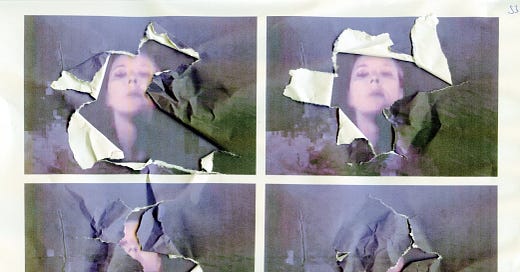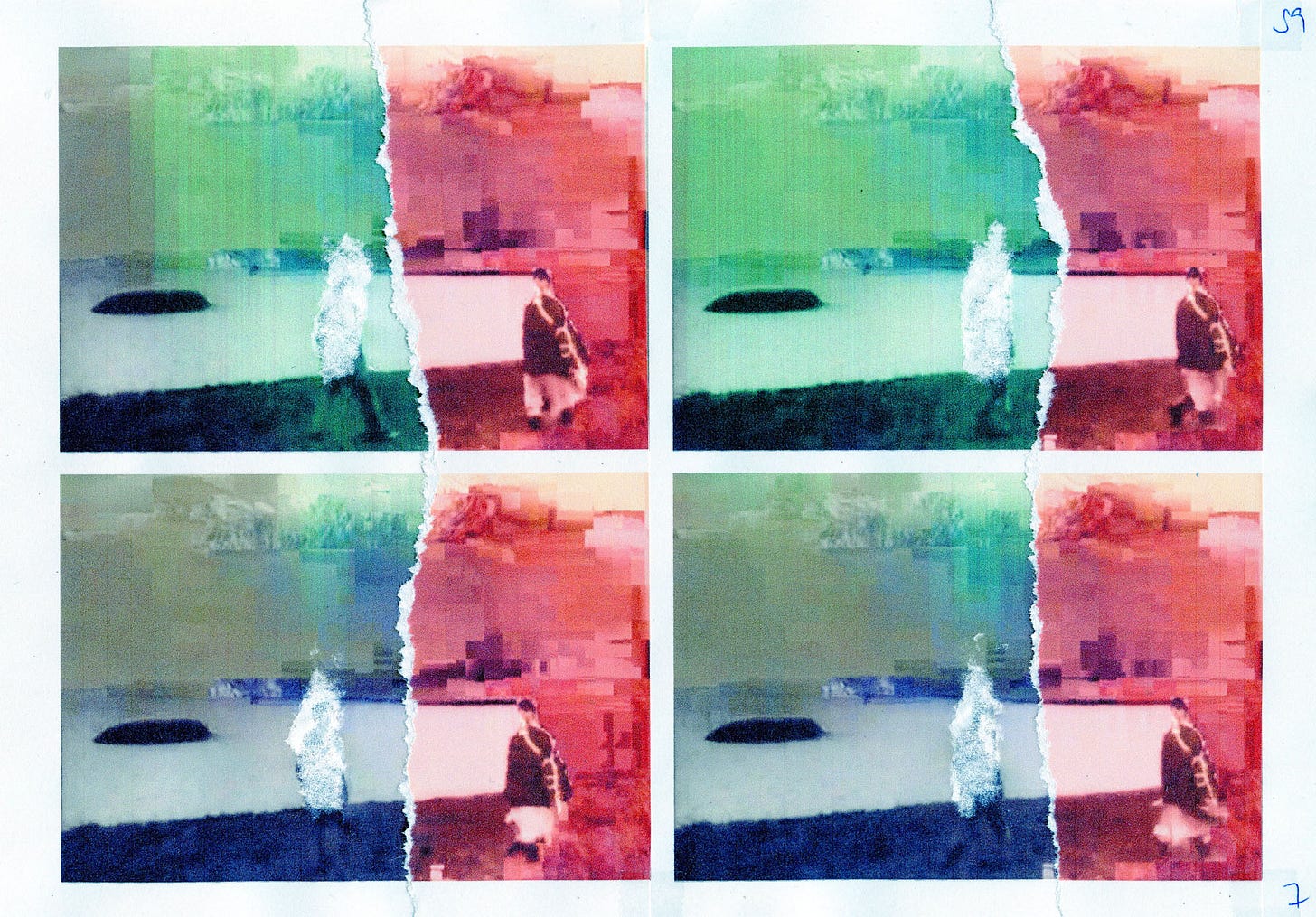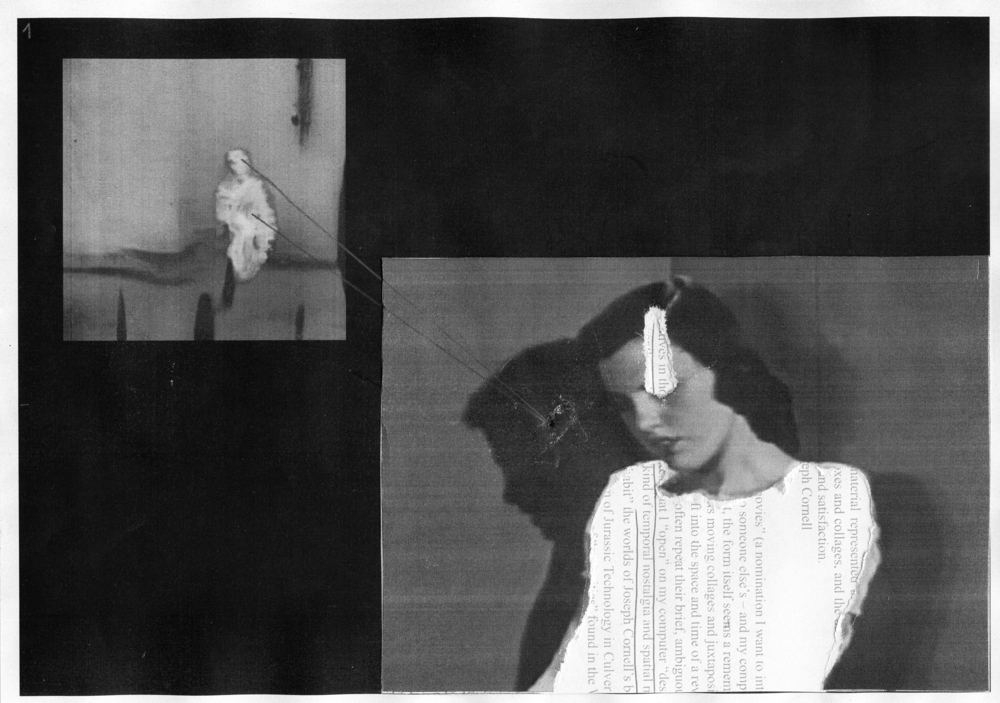ölmondnacht by Anna Malina
A corrupted & glitched daydream. A futile endeavor to cope with visions of terror... Sunflower Fields Forever!
Dear friends,
We’re very excited to announce a new film streaming on our website, carefully selected by our new film ambassador Bruno Atkinson as part of our digitalisation programme: ölmondnacht [OilMoonNight] by Anna Malina. The film is accompanied by a conversation between Anna and Bruno, some more works by Anna (including her amazing .GIF-piece Shadow Projection) as well as one more short film: ГАН ЕСКАПІЗМ [GAN ESCAPISM].
Anna’s work is particularly interesting in the context of digitalisation as she works with constructing and reconstructing films through digital and analog manipulation. “ölmondnacht,” she says, “is a revenge fantasy. A corrupted & glitched daydream. A futile endeavor to cope with visions of terror... Sunflower Fields Forever! It is based on scenes from various films by necrorealist filmmaker Yevgeni Yufit, cut into a new narrative influenced by the pain unleashed by Russia's recent invasion of Ukraine.”
Fascinating, right? We thought we’d share part of Anna’s conversation with Bruno here, too…
Bruno / culturala
Your film ölmondnacht is cut from scenes from various films by Soviet necrorealist filmmaker Yevgeny Yufit. Why did you decide to work with Yufit’s films?
Anna
I discovered Yufit’s films long ago in a now gone and mythical place called Surrealmoviez.I enjoy noise music, and so the term necrorealism [necro – death, and realism – related to real life] instantly drew me in. I already loved Tarkovsky’s slow films, especially his depiction of nature, so finding Yufit’s mixture of nihilistic absurdities and beautifully captured landscapes was perfect.
The inspiration and urgent need to make ölmondnacht came shortly after Russia’s invasion of Ukraine. I was desperately sad. At the time, although unrelated to the war, I was also experiencing some online harassment. Somehow the atrociousness of the news and the absurdly angry messages I was receiving at that time reminded me of the grotesque happenings in Yufit’s films and I felt the urge to process his films through my own pain.
culturala
You speak of not only re-cutting his films, but also printing stills with a depleted inkjet printer and working with the physical distortions that come out as a result. It’s a very interesting technique. I know that you have also spoken of working with physical materials like paper, acrylics, charcoal, and translating these into digital animations for other works. How did this use of physical methods influence the piece itself?
Anna
Yes, I not only re-cut them, I also datamoshed them [digitally manipulating the images] before printing and further manipulating the paper. The initial idea was to just process the new cut with datamoshing, but as I’m always drawn to work in the back-and-forth between physical and digital, I printed some frames to see if it would add anything interesting. The emptying ink cartridges produced images that were even more unstable. The colours were off but vibrant, and I loved the results so much that I added this step of physical glitches and further hand manipulation by tearing off parts, collaging, and applying water to the prints.
culturala
I’m very interested in the idea of a “discrete poetic world” that Vivian Sobchack writes about as something that can be created in the Quicktime movie, as opposed to the “extensive, horizontal scope and horizontal vision of cinema.” How does this relate to your re-adaptation of Yufit’s films? Do you think your audience will relate to your films in ways different to those of Yufit’s?
Anna
I would relate Vivian Sobchack’s ideas about Quicktime movies more to gifs. At least this is where I consciously try to make encapsulated miniatures that spin out of tune with the normal time of the world.
But being a short film, as opposed to the full-length films of Yufit that I used, this idea can relate to ölmondnacht too, especially as it is also structured as a loop. As an experimental film, the narrative is quite vague and more intuitive, hopefully functioning more on a perceptual level than an intellectual one.
You can read the conversation in full via culturala.org/olmondnacht, where you can also stream the film.
With love,
Anna, Bruno & culturala







